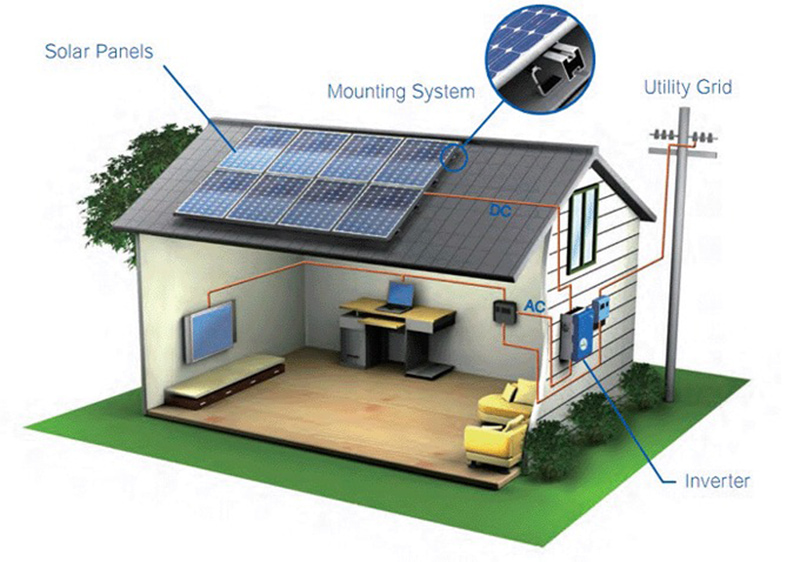Switching to solar energy is an exciting step toward reducing your carbon footprint and cutting down on electricity bills. One of the first questions homeowners often ask is, “How many solar panels do I need to power my house?” The answer depends on several factors, including your energy consumption, the efficiency of the solar panels, and your location.
Understanding Your Energy Consumption
The first step in determining the number of solar panels required is to understand your household’s energy consumption. This is typically measured in kilowatt-hours (kWh). You can find your monthly or annual energy usage on your electricity bill. The average U.S. household uses about 877 kWh per month, but this can vary widely depending on the size of the home, the number of occupants, and energy habits.
Solar Panel Efficiency and Output
Solar panel efficiency refers to how well a panel converts sunlight into electricity. Most residential solar panels have an efficiency rating between 15% and 20%. Higher efficiency panels produce more electricity in a smaller area, which can be particularly important if you have limited roof space.
The output of a solar panel is measured in watts (W), with most residential panels ranging from 250W to 400W. To estimate how much electricity a single panel will produce in a year, multiply the panel’s wattage by the number of sunlight hours your location receives annually. For example, if you live in an area that gets 1,500 sunlight hours per year, a 300W panel will generate approximately 450 kWh annually.
Calculating the Number of Panels
To calculate the number of panels needed, you’ll divide your annual energy consumption by the annual energy output of one panel. For example, if your home uses 10,500 kWh per year and each panel produces 450 kWh, you would need about 24 panels (10,500 ÷ 450 = 23.33).
Here’s a step-by-step breakdown:
- Determine your annual energy usage: Review your electricity bill to find out how many kilowatt-hours your household uses in a year.
- Estimate your solar panel output: Based on your location’s sunlight hours and the wattage of the panels you’re considering, calculate how much energy each panel will produce annually.
- Divide your annual energy usage by the panel output: This will give you the total number of panels needed to meet your energy needs.
Other Factors to Consider
- Roof Space: The number of panels you can install depends on the available roof space. Higher efficiency panels may be necessary if you have limited space but need a large amount of energy.
- Orientation and Tilt: The orientation (direction) and tilt (angle) of your roof can affect the efficiency of your solar panels. South-facing roofs with an optimal tilt angle receive the most sunlight, increasing panel efficiency.
- Energy Goals: Some homeowners choose to install enough panels to cover 100% of their energy needs, while others may opt for a smaller system that covers a portion of their usage, depending on budget or space constraints.
The Role of SIC Solar in Your Solar Journey
When planning your solar installation, it’s essential to choose a mounting system that ensures your panels are securely positioned for maximum efficiency. SIC Solar offers a wide range of high-quality photovoltaic mounting solutions designed to meet the needs of residential solar installations. Their racking systems are engineered for durability and ease of installation, making them an excellent choice for homeowners looking to maximize their solar investment.
SIC Solar mounting structures are versatile, accommodating various roof types and angles, ensuring that your panels are optimally oriented for sunlight exposure. By partnering with SIC Solar, you can be confident that your solar panels will be securely and efficiently installed, helping you achieve your energy goals.

The number of solar panels needed to power your house depends on several factors, including your energy consumption, panel efficiency, and location. By carefully calculating your energy needs and considering factors such as roof space and orientation, you can determine the optimal number of panels for your home.
Partnering with a trusted provider like SIC Solar for your mounting system ensures that your solar panels are installed in a way that maximizes their efficiency and longevity. With the right setup, you can enjoy the benefits of solar energy for years to come, reducing your reliance on the grid and lowering your energy bills.